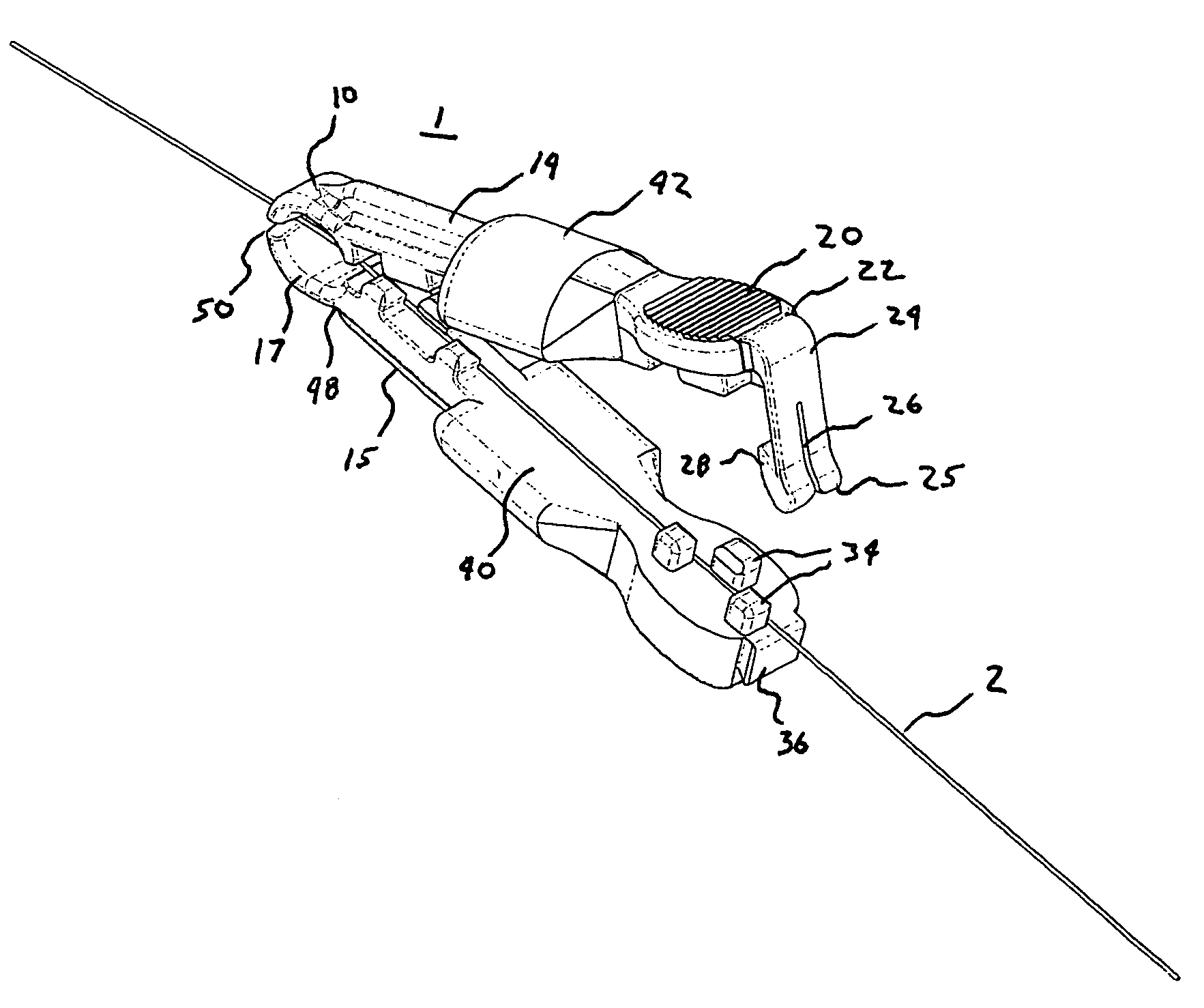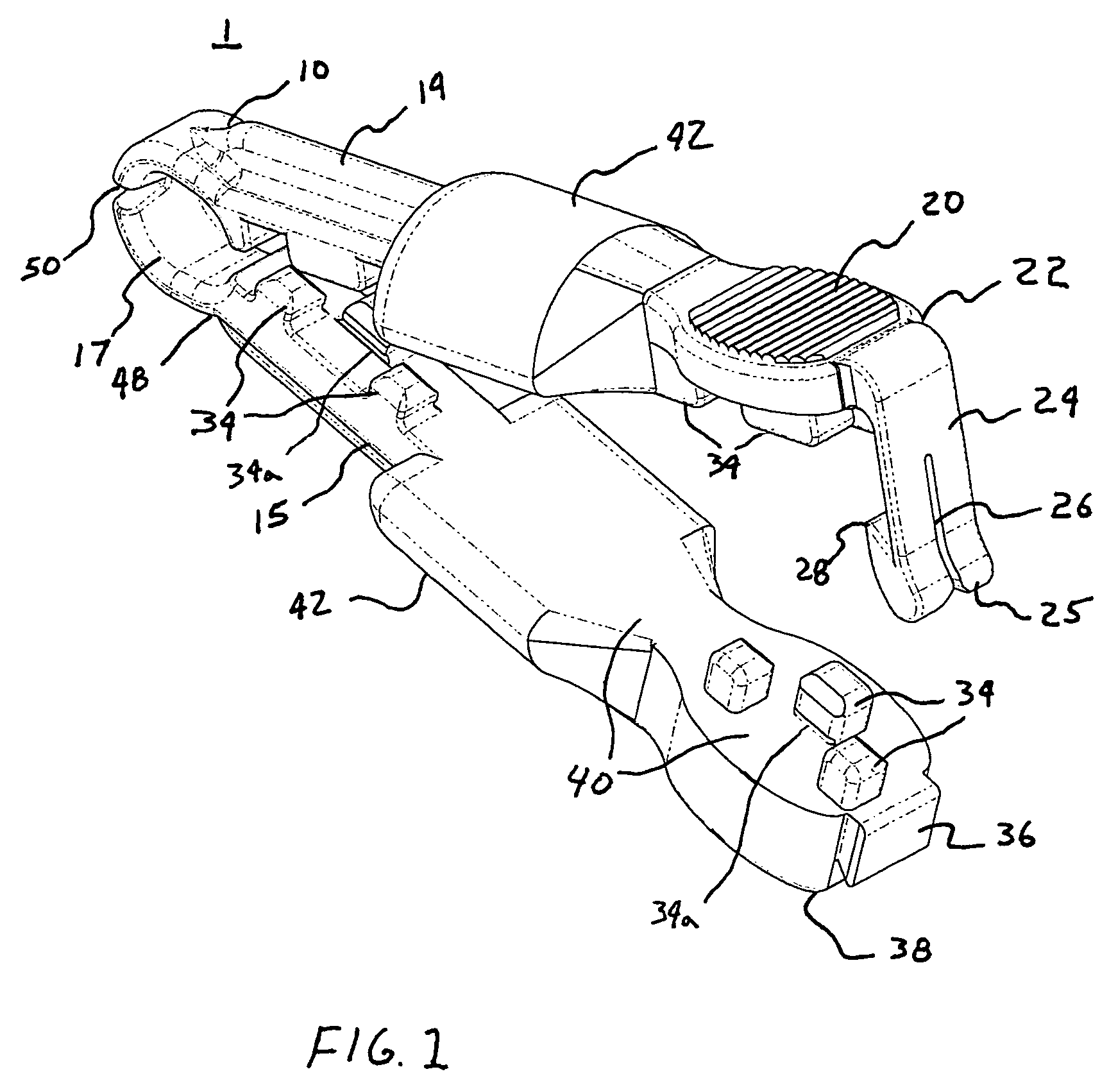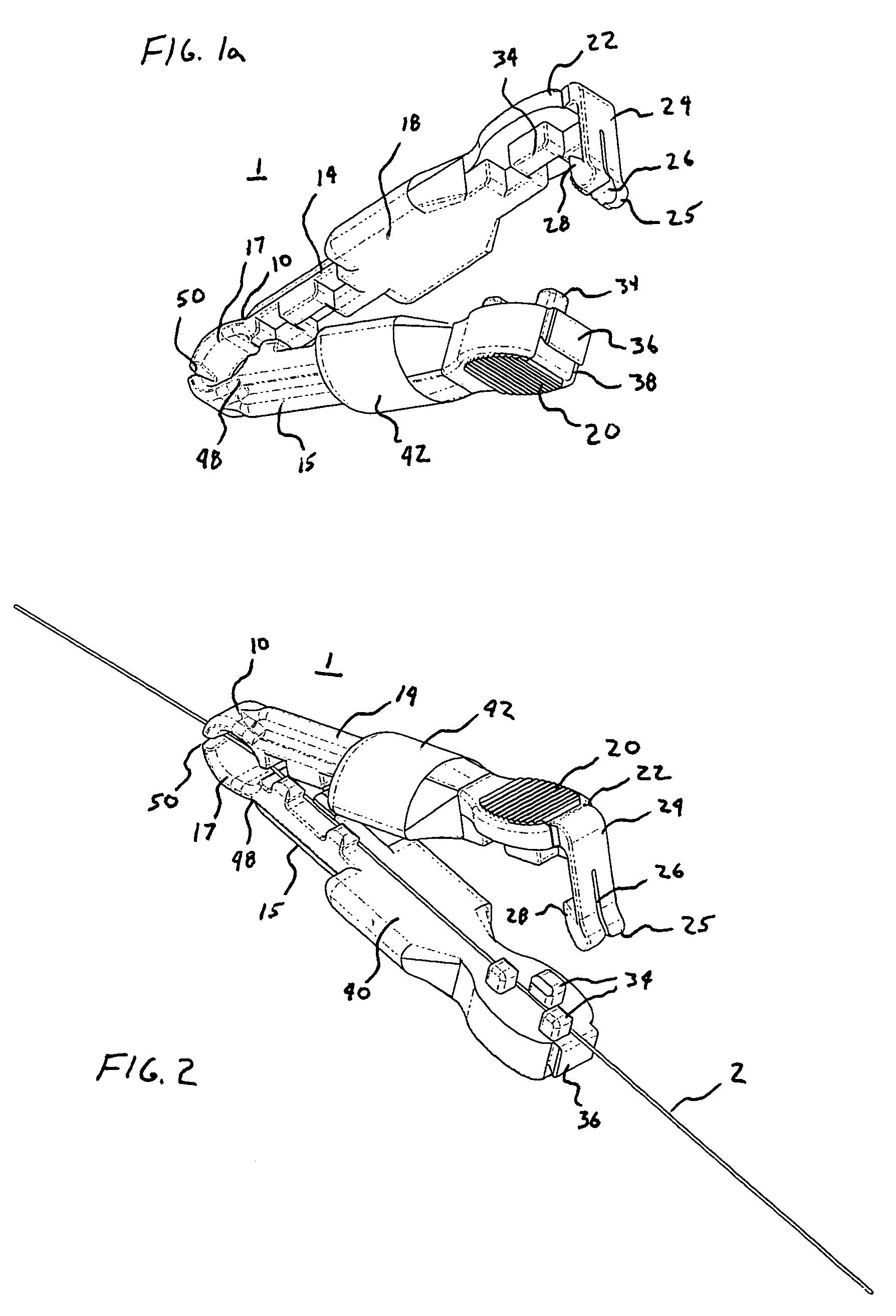Quick-release torquer apparatus for delivering and maintaining a medical guideware
a technology of quick release torquer and guideware, which is applied in the direction of invalid friendly devices, prostheses, catheters, etc., can solve the problems of inherently more complicated procedures, further complicated endovascular diagnosis and therapy, and difficulty in reaching the operative site with the tools, etc., and achieves the effect of rapid exchange of tools and/or devices
- Summary
- Abstract
- Description
- Claims
- Application Information
AI Technical Summary
Benefits of technology
Problems solved by technology
Method used
Image
Examples
Embodiment Construction
[0033]The invention will now be described in detail in relation to a preferred embodiment and implementation thereof which is exemplary in nature and descriptively specific as disclosed. As is customary, it will be understood that no limitation of the scope of the invention is thereby intended. The invention encompasses such alterations and further modifications in the illustrated method, and such further applications of the principles of the invention illustrated herein, as would normally occur to persons skilled in the art to which the invention relates.
[0034]FIGS. 1–6 demonstrate the present invention in the form of a torquer 1 configured to be positioned on a guidewire 2. In the preferred embodiment, the guidewire 2 suited for use with the present invention is a medical guidewire 2, wherein the torquer 1 is positioned on or fastened to the portion of the medical guidewire 2 external to the patient, such that the medical guidewire 2 is then capable of being manipulated or maneuve...
PUM
 Login to View More
Login to View More Abstract
Description
Claims
Application Information
 Login to View More
Login to View More - R&D
- Intellectual Property
- Life Sciences
- Materials
- Tech Scout
- Unparalleled Data Quality
- Higher Quality Content
- 60% Fewer Hallucinations
Browse by: Latest US Patents, China's latest patents, Technical Efficacy Thesaurus, Application Domain, Technology Topic, Popular Technical Reports.
© 2025 PatSnap. All rights reserved.Legal|Privacy policy|Modern Slavery Act Transparency Statement|Sitemap|About US| Contact US: help@patsnap.com



